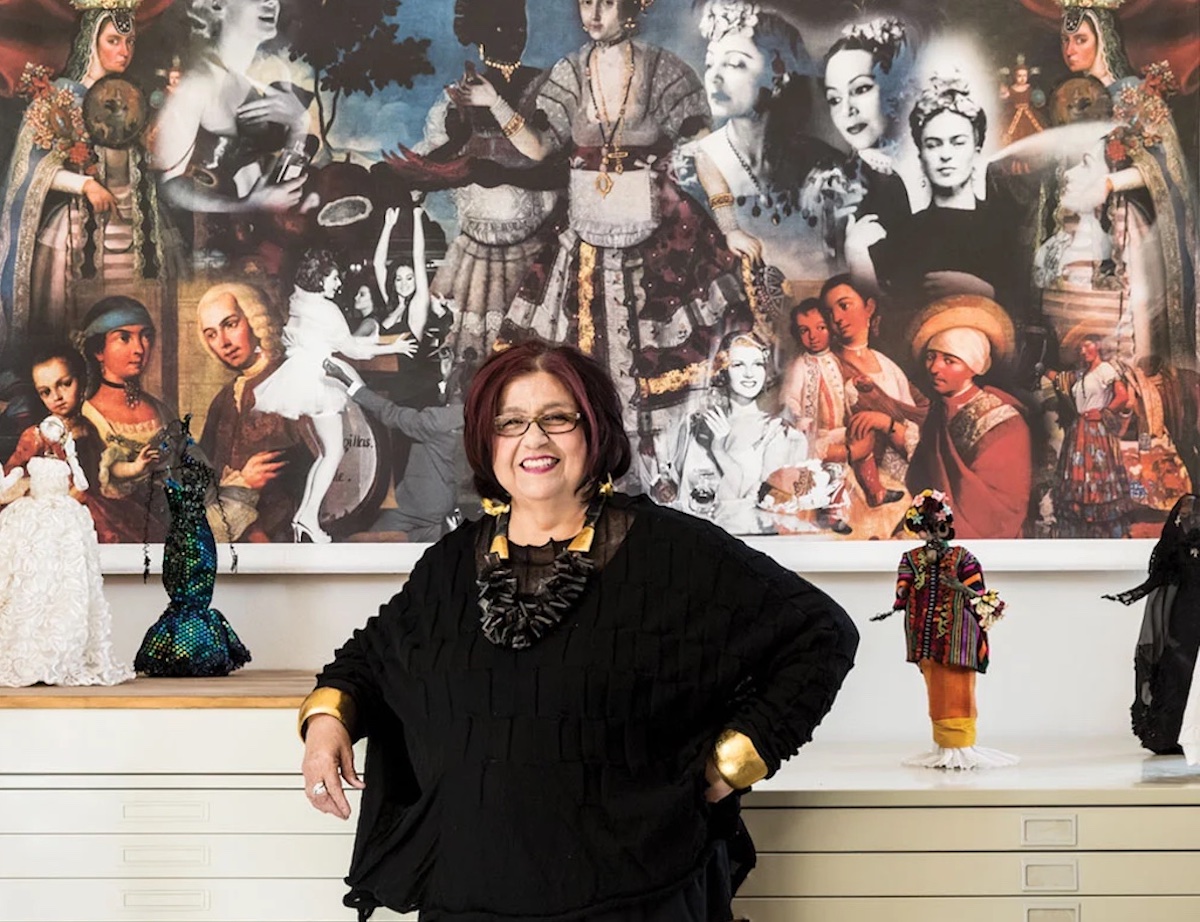Despite having a MacArthur “genius” grant, among other accolades, Amalia Mesa-Bains, like many Chicana artists of her generation, has always had to work harder than most for attention from the mainstream art world. Now, the 79-year-old Bay Area artist is receiving her first museum retrospective, opening Feb. 4 at the Berkeley Art Museum and Pacific Film Archive.
Amalia Mesa-Bains: Archaeology of Memory, at BAMPFA, Feb 4-July 23. Free community day, Feb. 4, with events for all ages.
Mesa-Bains’ Venus Envy series exemplifies her signature practice of creating “altar installations,” a form of multimedia work she pioneered in the 1970s. The works reimagine Mexican Indigenous traditions, such as the home altar or roadside shrine through a contemporary lens. At first glance, these gallery-sized installations resemble traditional altars common in Mexican American domestic spaces — but take a closer look and you’ll notice subtle contemporary elements, including references to Mesa-Bains’ family history.
Chicano art emerged in the 1960s as a distinct space for artists of Mexican descent to express themselves on their terms, unbound by the expectations of the mainstream art world. Much like the Chicano identity, this was forged in the crucible of the civil rights era as a solidarity movement for Mexican Americans. Since that time, Chicano art has traveled from the periphery to the center of contemporary art discourse, to the point where you can’t tell the story of American art over the past 50 years without talking about Chicano art — or Chicanx art, as it has become known. And you can’t tell the story of Chicanx art without telling the story of Mesa-Bains, one of its greatest champions.
BAMPFA launches a new chapter in that story when it opens this ambitious exhibition. Although Mesa-Bains has exhibited internationally and featured in many important museum collections (including the Whitney, The Smithsonian and the San Francisco Museum of Modern Art), she has never received a retrospective until now.
For nearly half a century, Mesa-Bains has been nationally recognized as a practitioner and a scholar of Chicanx art, advocating for the movement’s importance to broader discourse and inspiring a younger generation of artists to follow her lead. And she has done so while centering a feminist perspective at the core of her work, coining the influential concept of domesticana to imagine new forms of self-expression and patriarchal resistance for Mexican American women.
Mesa-Bains’s subversive feminist streak will be on full display in Amalia Mesa-Bains: Archaeology of Memory, the first exhibition to bring together all four installments in the artist’s multi-decade installation series Venus Envy. (A wry pun that would make Sigmund Freud blush.) Like all of her work as an artist and scholar, the altar installations are infused with Mesa-Bains’ longtime interest in themes of cultural diversity, environmentally centered spirituality, and intersectional, intergenerational feminism.
Archaeology of Memory also highlights Mesa-Bains’ armoire-based installations from the 1990s and 2000s, which incorporate the wardrobe as a site of investigation to be opened, scraped, and sorted through. Sometimes displaying works from present-day museum collections, these cabinet-like installations are embedded with subtle references to European colonial extraction of cultural objects, which were often displayed in “curiosity cabinets” that became forerunners of the modern museum. The artist explores women’s histories through metaphorical “work sites,” such as opened drawers, laboratory and desk tables, and handmade books.
To followers of Chicanx art, the news of an Amalia Mesa-Bains retrospective is being met with a resounding, “About time!” But even longtime fans of the artist’s work may not realize that she is also a distinguished author, curator and educator who holds a Ph.D. in psychology from the Wright Institute in Berkeley and has published extensively on the subject of Chicanx art. She also deserves recognition as one of the leading voices in the Latinx art community of the Bay Area, where she has lived and worked for most of her life — including an early stint as a teacher in San Francisco’s public schools.
As one of the most influential theorists of Chicanx art studies, Mesa-Bains now finds herself the subject of fresh scholarship in the field she helped establish. In conjunction with the retrospective, BAMPFA and UC Press are co-publishing a 176-page illustrated catalog that marks the first major scholarly publication on Mesa-Bains’s body of work. The book is co-edited by the exhibition’s guest curators, María Esther Fernández, the inaugural artistic director of the Cheech Marin Center for Chicano Art and Culture in Riverside, and Laura Elisa Pérez, a professor in UC Berkeley’s department of ethnic studies who co-chairs the university’s Latinx Research Center.
Fernández and Pérez are also working with BAMPFA to coordinate a touring presentation of Archaeology of Memory at venues outside the Bay Area, starting with the Cheech Marin Center in Riverside, a year-old museum highlighting Chicanx art, including the many younger artists who have been inspired by Mesa-Bains’s trailblazing work.
It’s a fitting culmination — or perhaps the start of a new chapter — for one of the Bay Area’s most essential artists, whose influential legacy is finally getting the national recognition it deserves.

